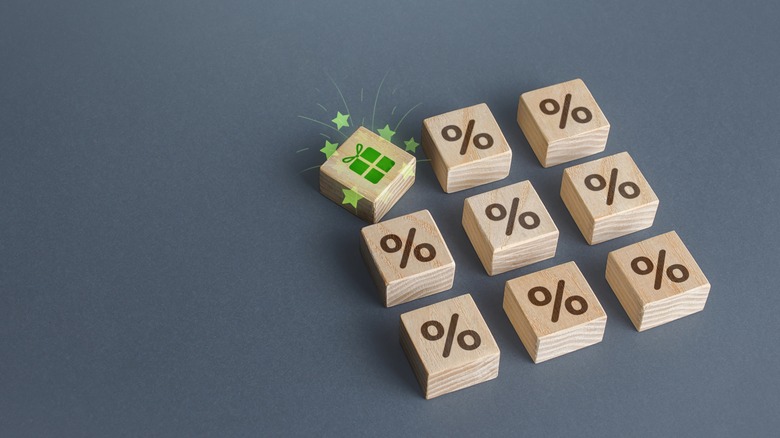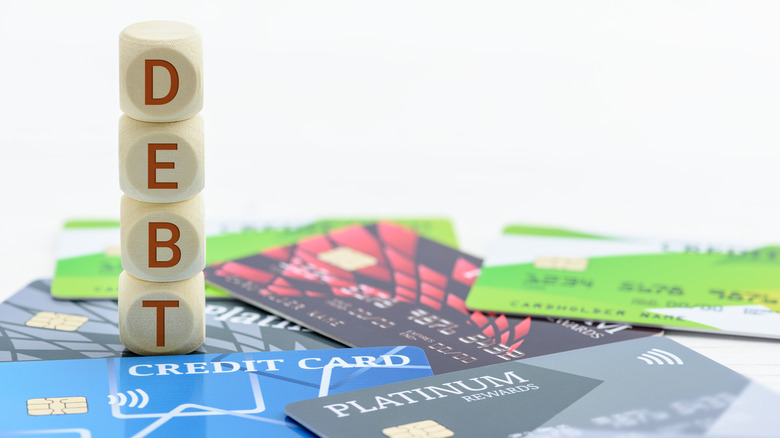The 8 Best Ways To Consolidate Credit Card Debt
Credit card debt is a consistent issue for many millions of Americans. The average American cardholder owes more than $6,000 in credit card debt. Furthermore, the average interest rate assessed to American credit card users is 21.4%, a significant addition to the balance owed each and every month.
Credit cards can be a versatile spending weapon that alleviates cash flow issues and provides immense kickbacks in the form of rewards points or cashback. Yet, these benefits are only really seen by cardholders who maintain a zero balance or pay only minimal tacked-on interest through intense policing of the principal owed. For most card users, interest additions outpace the benefits that are provided for using one particular card over another.
But this doesn't have to be the reality for U.S. credit card users. In truth, consolidating and eliminating credit card debt is something that anyone can accomplish. While it is possible and highly achievable, there are some key features of a successful credit balance reduction that must be made a part of your daily spending and budgeting routines if you are to find relief from bills that tack on additional financial stress to your life. With these strategies for credit card debt consolidation, reducing outgoing expenses and additional costs is possible and can ultimately lead to life-changing results.
Rethink all outgoing expenses
The first thing that consumers need to know about credit card consolidation and payoff strategies is that they take time. Using a balance transfer or another movement strategy can give you relief from the monthly interest rate that keeps the balance high, but if you don't make other changes in your budgeting and payoff strategy, the issue is really just pushed down the road rather than resolved.
The first thing that anyone with credit card bills they're looking to consolidate and reduce must do is rethink their budget. Getting serious about paying the bill off is a must in this regard. For most people, incoming finances are fairly static and cannot be bent to increased bill-paying needs. While 70% of Americans want to work as self-employed (and as a result self-determining earners), only about 7% actually work in this type of arrangement. Likewise, self-employed earners face their own types of budgetary restrictions and issues — chiefly, the need to maintain a consistently high personal motivation to work and provide for themselves.
Because of this reality, an extra $100 spent on paying down the credit card bill each month has to come from somewhere and can't simply be created through additional work hours. Rethinking every outgoing expense on your budget is the first port of call when approaching debt reduction and consolidation. Trimming unnecessary spending can help make a substantial difference here, even if it might be a little painful.
Pay down debt with the snowball or avalanche approach
Consolidating debt is one part of the equation when it comes to tackling credit card bills that you want to eliminate. The average American has four credit cards (and likely other sources of personal debt in the form of a mortgage, car loans, student loans, and others). This means that the potential for a balance transfer is out there for most, yet this isn't the first stop on the way to better credit management.
Once you've contemplated your budget, the next thing to consider is how you'll pay down the debt faster than you've been paying it. Experts recommend either the snowball or avalanche method for this strategy. Both are fairly easy to implement but diverge in terms of strategy. The snowball method focuses on paying off the smallest debts first, then transferring the minimum payment and additional cash to the next lowest card once the balance is eliminated. This snowballs into a much larger payment capability over time as various minimum payment requirements are removed.
On the other hand, the avalanche approach targets the bill with the largest interest rate (essentially, the most expensive debt). This balloons the payments to the second largest once that has been eliminated but takes much longer to bring down to zero and can be disheartening for those who have less patience.
Use a balance transfer offer
Balance transfers are a great option to use in tandem with other repayment strategies; they are not, however, a cure-all for high credit utilization. Balance transfers simply move debt from one lender to another, effectively bringing debts together into one account and a single corresponding repayment.
For those with a high credit limit and a number of different debt accounts, balance transfers provide a great means of bringing debt together under a single repayment plan, and often come with favorable terms, too. Cardholders are often provided with temporary zero-interest periods for use with balance transfer funds, and opening a new credit account specifically to use the card as a balance transfer option has been a tried and true method of eliminating punishing interest for years.
Balance transfers give cardholders temporary relief from the continuation of rising balances, but they only work if you are also serious about debt elimination. Transferring any balances that you can to a zero-interest account gives you the ability to focus on debt that remains on a high-interest card, or the option to potentially bring all your debt together under the offer. Paying off as much of the transferred debt as possible before the term expires gives you a great jumpstart on complete repayment and financial freedom from expansive credit burdens.
Consider a personal loan
Many businesses offer personal loans specifically for the purpose of paying off high-interest debts. Experian reports that the average interest on personal loans (as of 2019) is 9.41%, but this can vary greatly depending on personal credit history, total balances carried, and much more. This figure is far smaller than the average credit card account rate, giving consumers a powerful option when it comes to transferring high-interest debt through this simplified consolidation vehicle.
A personal loan also gives consumers a definitive end date for the payments, rather than leaving the repayment schedule up to them. This is great for credit card users who haven't been successful in overpaying on their bills in the past. It's incredibly easy to fall into the habit of only making minimum payments to credit cards, especially if those required payments rise to hundreds of dollars every month.
With a personal loan, you'll pay an agreed amount each month, which will ultimately end once the loan term expires. This approach gives a debt consolidator a static point in the future at which they will be debt free (assuming they don't continue spending on newly freed up available credit).
Utilize home equity to transfer the burden
Home equity loans are also a useful option for those struggling to manage their revolving credit accounts. Like a personal loan, home equity loans are taken out with fixed terms and a far lower interest rate than the credit card that's being refinanced.
A HELOC (Home Equity Line of Credit), on the other hand, acts like a secured credit card that's rooted in your home equity. It brings along the unique benefit of low interest and a repayment term that doesn't start for ten or more years. This can effectively push out your repayments on high-interest debt to a time when you have less financial strain and many more years of work experience (resulting in what is likely to be a significantly higher wage). Similarly, when the repayment period does begin, the severely reduced interest rate– currently averaging 6.51% — means that the assessed interest will be far lower, creating a much cheaper cost of borrowing.
Tap into your savings portfolio for targeted relief
Selling off accumulated assets can help eliminate some or all of the financial strain that credit card bills can bring to the table. The average 35- to 44-year-old has saved about $27,900 (with a median figure of $4,710), while those under 35 have roughly $11,200 in savings (with a median of $3,240). Wherever you fall on the spectrum of savings, falling back on your investment portfolio or savings account to make a significant dent in your credit accounts can be a major boost to your financial situation more broadly.
With interest rates on credit averaging over 20%, you're likely losing money by keeping it invested or saved rather than focusing on eliminating credit card debt, considering that the stock market's annualized return sits at about 10%.
Leveraging a part of your savings to gain a jumpstart on repayment can give you the edge you need to dismantle the financial strain of ongoing credit card debt. Paying off a single card with your savings can effectively launch you on a path to making substantial use of the snowball method. Kicking off this approach by immediately moving one minimum payment to a new card will make you feel fantastic and get you moving on the path to financial independence much faster.
Investigate peer-to-peer lending opportunities
Peer-to-Peer lending is relatively new. P2P Market Data reports that this approach to debt management was created in 2005, and is a means of rapidly connecting borrowers with investors who act as lenders. Platforms engaged in P2P lending (or social/crowd lending) are the facilitators: They create terms, provide an easy-to-understand distillation of the transaction process, and connect the two parties together so that investors can reap the financial rewards and borrowers can activate the cash they need for rapid debt consolidation.
A P2P lending platform is a new application of FinTech that allows individual investors to act in a larger group that creates lending opportunities. This is something unique to the modern age and provides a viable alternative to the traditional banking model that borrowers have typically had to rely on. P2P lending options may provide borrowers with expanded inclusion criteria or better interest rates than are available at traditional banks. However, Investopedia notes that default rates are higher than the average seen in more traditional forms of financing.
For someone serious about debt consolidation and ongoing management, this may be a great option for fast financing and easy-to-grasp terms that make the debt management process far more transparent while building a blueprint for future financial freedom.
Reach out to a credit repair or counseling agency
One last option that debtors can consider is the use of a credit repair or credit counseling agency. The National Foundation for Credit Counseling reports that this approach can function as a means to prevent the declaration of bankruptcy while rolling all your bills into a single and affordable monthly payment. Credit management operations typically negotiate with your lenders and work to create a new deal that will see you pay far less than the balance owed. This is great for borrowers who are truly stuck in a cycle of making ends meet each month by the slimmest margin.
Credit counseling agents are highly effective at negotiating a settlement, but this is done at the expense of your credit score for the medium to long term. Essentially, you pay into an account managed by the business instead of making payments to your credit card company. The manager then works to negotiate a lump sum payment to your card issuer in return for forgiveness of the remaining debt.
For this to work, however, you have to stop making regular credit card payments for an extended period of time, effectively tanking your ability to borrow for some time. As a last-ditch strategy to get out from under immense fiscal pressure, though, it's highly effective.








